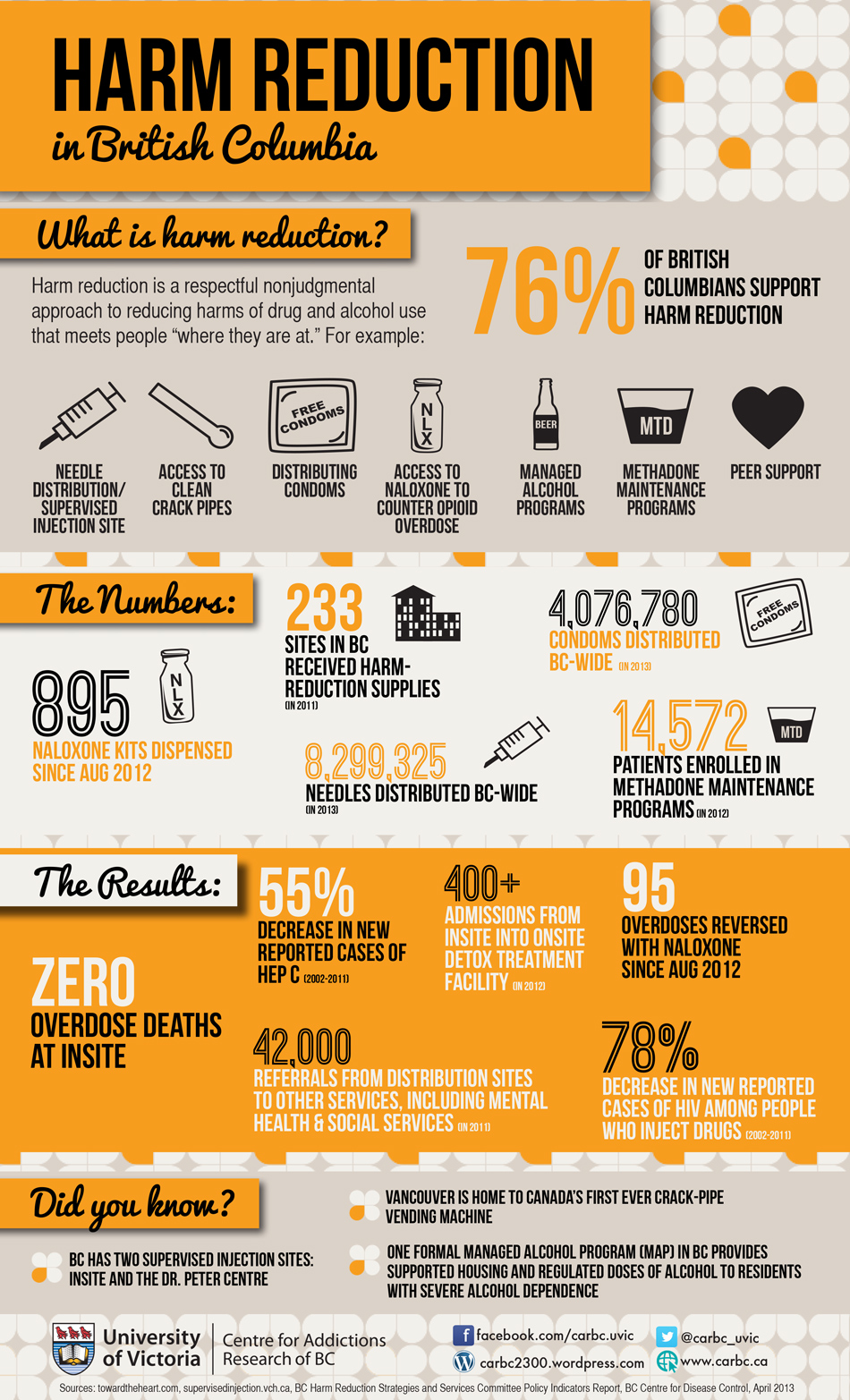Scientific research around the country has proven that two of the most important components of any plan to end homelessness are housing first and harm reduction. As a result we at the Coalition have made these methodologies key to our mission to end homelessness in the Capital Region.
Many people however aren’t quite sure what those terms actually mean. We addressed housing first, in a previous blog. Now it is time to look at harm reduction. Harm reduction comes into play for those individuals for whom addictions challenges play a role in their homelessness.
Harm reduction is a strategy aimed at reducing the risks and harmful effects of substance use and addictive behaviours. It is respectful nonjudgmental approach to addressing issues of substance use. Recognizing that abstinence may be neither a realistic or a desirable goal for some users (especially in the short term), the use of harmful drugs or alcohol is accepted as a fact and the main focus is placed on reducing harm while use continues. Different people need different supports and solutions. The key here is to work with a person where they are at, and to give them choices and options.
This great infographic comes from UVIC’s Centre for Addictions Research BC – one of our great partner organizations:
Written in 2011, Housing & Harm Reduction: A policy framework is a guide for the successful integration of harm reduction strategies into a housing first approach.

